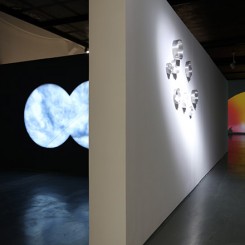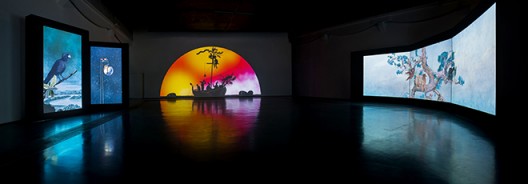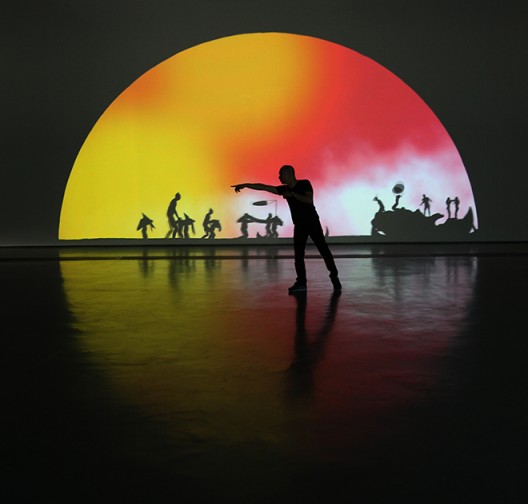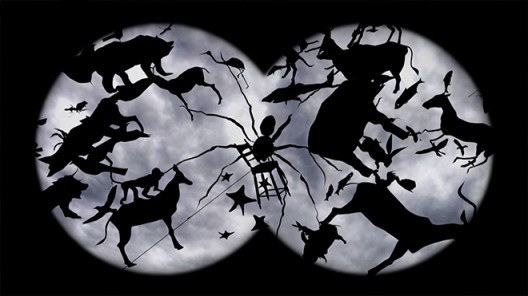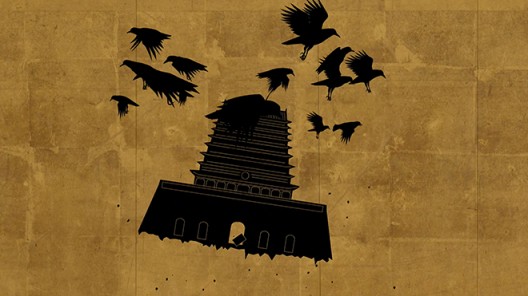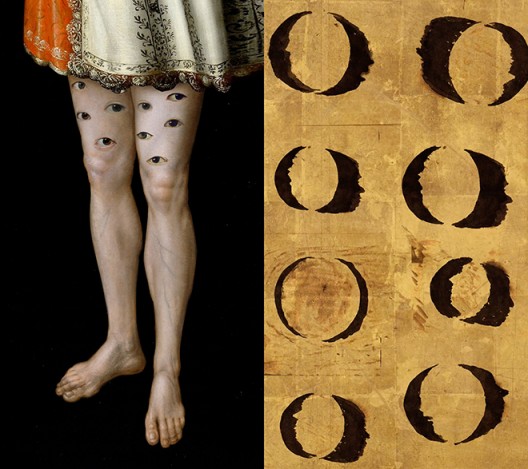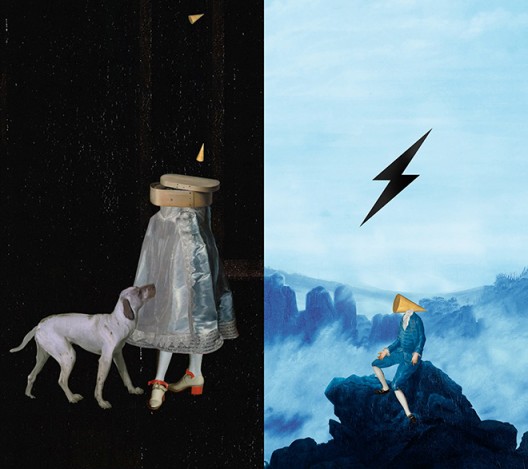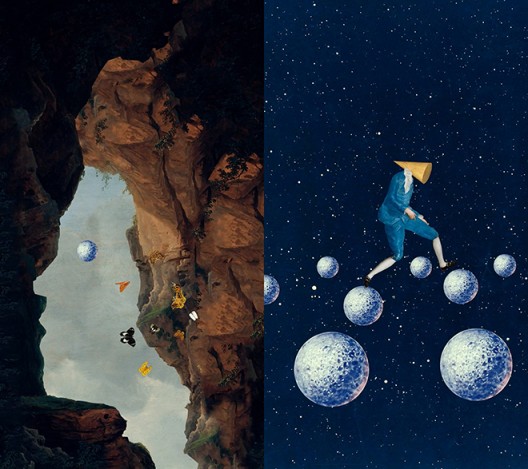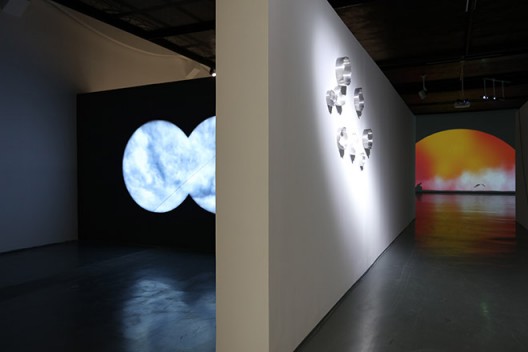Hive Center for Contemporary (798, Chaoyang, Beijing), Sep 6–Oct 5, 2015
Wu Junyong, a new media artist born in 1978, first gained renown for his satirical Internet animations. More recently in his solo exhibition at the Hive Center for Contemporary Art, we find, however, the blunt social satire of his earlier works has been replaced with metaphors more implicit and sophisticated. At the same time, this artist, adept at Internet propagation, has demonstrated a mature mastery of space with this powerfully engaging exhibition.
Passing through the long corridor specially installed for this exhibition, on the wall facing the visitors is “The Rising Moon”, Wu Junyong’s new work in 2015. The giant semicircle awash in golden yellow and orange hues along with its reflection on the floor adds much to the brilliance, evoking the image the sun hanging over the sea. Against this splendid backdrop, various silhouettes entered the arena one after another—small figures sporting top hats riding little boats in the shape of reproductive organs, devils with long horns climbing up bamboo poles to pluck a moon out of the moon—much like an aimless, outré revelry brought by a noir version of circus. Such is the dazzling sheen conjured up by “The Rising Moon”: an air of fantasy pervades the space.
On the left is a two-channel installation of the same title as the exhibition, “Portrait of Light”, all from the collection of Google Art Project, with a gamut of images from different times and places at the artist’s full disposal. The images make for an incredible collage, with the two monitors mutually independent and yet interrelated, forging a dual temporal and spatial montage. To its opposite side is another piece of work titled “Flying Boat”, composed of three videos which open up like screens, and modeled after ink paintings in a particularly classical style. In the two side halls along the corridor, the artist’s earlier works of animation “The Dispersal of Birds and Animals” and “The Stomach of Time” are screened. All are meticulously laid out to ensure that visitors can always see at least two pieces of work from any vantage point.
Although Wu Junyong created his animated trilogy titled “Theater” in 2006, it seems only with this exhibition we start to genuinely experience the “theatricality” of his works, or that sense of presence irreducible to two-dimensional imagery. There is first of all that effective use of the space which transcends the function of a mere “container” or background to become an integral part of the artwork on display. Then there is the deliberate manipulation of the relations between different works, allowing for the intermingling of their “aura” and visually and psychologically referencing each other. More importantly, the exhibition’s open plan constructs for visitors a spatial narrative typifying traditional Chinese gardens—those subtle transformations of vista with every step. With the unique silhouettes in the works transforming visitors’ shadows into an organic part of the creative whole, visitors take part first-hand in the revelry.
